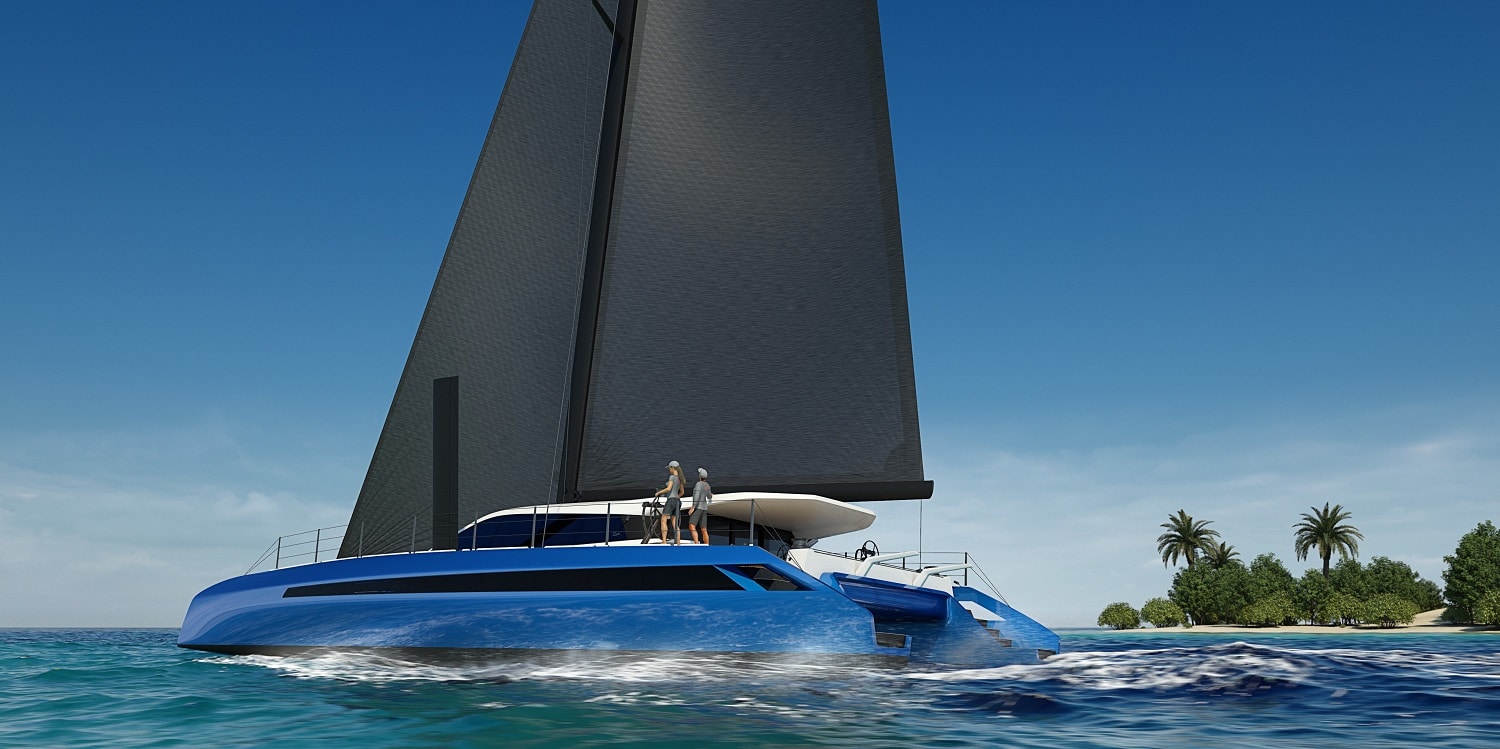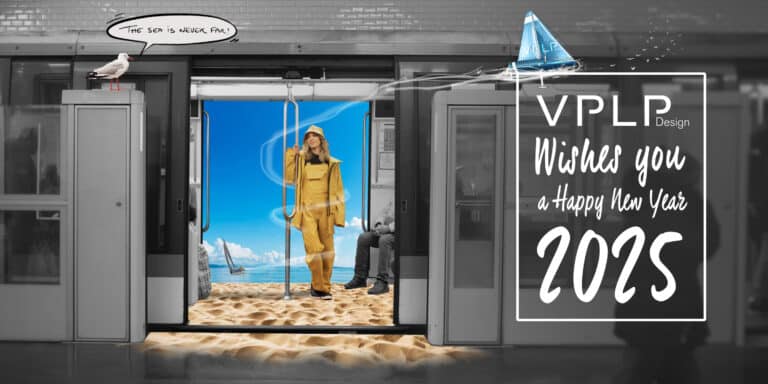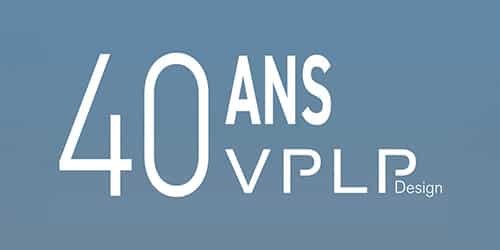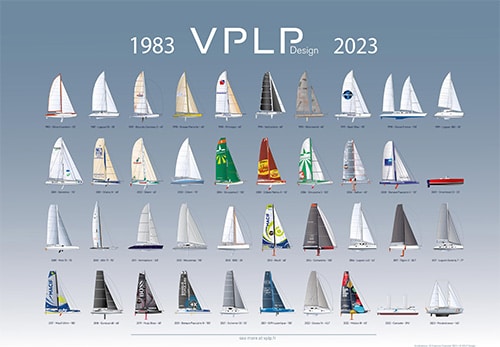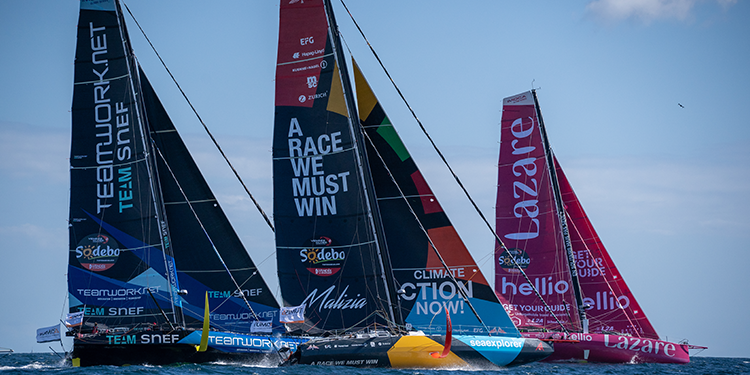Greater space, the comfort of a flatter ride, and high average speeds: the benefits of catamaran ownership are well known, but they’re also enhanced proportionally to hull length. As a result, large catamarans are growing in number and attracting new ownership profiles from a variety of backgrounds. VPLP Design continues to play an active and innovative role in this market, one which we greatly contributed to developing. Marc Van Peteghem and Mathias Maurios discuss background, news and predictions.
Launched in 1998, the 42m Douce France was for many years the largest sailing catamaran in the world. “She was unique, the material expression of a dream,” remembers Marc Van Peteghem, cofounder of VPLP Design. “Even though the boat was designed for charter work, every bit of her expressed that French art de vivre.” More than ten years would pass before another VPLP design, Hémisphère (launched 2011), would break her record. Measuring 145 feet in length, sloop rigged and carrying a 53m carbon mast, this exceptional catamaran – built in aluminium and beautifully fitted out at the Pendennis Shipyard in Falmouth (England) – has two circumnavigations to her credit and continues to carry her American owner and diving enthusiast to the world’s most extraordinary locations.
“Mousetrap has to get a mention, too, measuring a very respectable 110 feet,” says Marc Van Peteghem. In other words, the largest carbon-fibre catamaran in the world, built by CDK Technologies, fitted out by JFA in Concarneau (France), and launched in 2012. “All these catamarans are unique projects with the same usage scenario: undertake real sea passages and access remote anchorages where passengers can enjoy the benefits of increased stability without being draught restricted.”
While catamarans over 24m remain a niche market, in recent years the industry has seen an increase in a variety of categories, attracting owner profiles from various backgrounds. “When I joined VPLP twenty-three years ago, I started working on a 78-foot catamaran,” says Mathias Maurios, partner naval architect and head of the firm’s cruising division. “She was a big vessel for the time. Today, Lagoon have a 77-footer in their catalogue, which just goes to show how the market has changed! Industrial expertise has pushed back the limits of cruising catamarans, but that hasn’t hindered the development of the superyacht market.”
Innovation makes the difference
A highly competitive market where innovation makes the difference. Grand Large Yachting successfully relaunched the American brand Gunboat, purchased in 2015, with the creation (in France) of a range of models from 68ft to 80ft. Their exceptional style and performance are aimed at an expert clientele who wants to make rapid passages and take part in prestigious crew events. “They offer a level of comfort never seen on a mono-hulled craft,” says Mathias Maurios. “Gunboats have been an outright success, and other segments are developing too. More and more customers are moving from monohulls, sometimes motor yachts, to large cruising catamarans for their low carbon footprint and because they enable them to sail pretty quickly, provided the weight estimate is kept under control.”
Ensuring the easiest possible handling for these big catamarans lies at the heart of VPLP Design’s research. Oceanwings, which were initially designed to help decarbonize the shipping industry, have reached a stage in their development where they could find very concrete expression on the big cruising vessels of today. Tested on Energy Observer and then fitted to Canopée (the cargo ship designed to transport parts of the Ariane 6 rocket), they are easy to use. “These wingsails are entirely automated and require very little training for the crew,” says Marc Van Peteghem.
Several blue-water cruising projects designed by VPLP Design are already using this technology, such as Aperio. The propulsion of this 46m catamaran, whose accommodation surface area extends at anchorage to more than 500m², relies exclusively on two parallel wingsails, which are both reefable, furlable and draw less than 40m.
